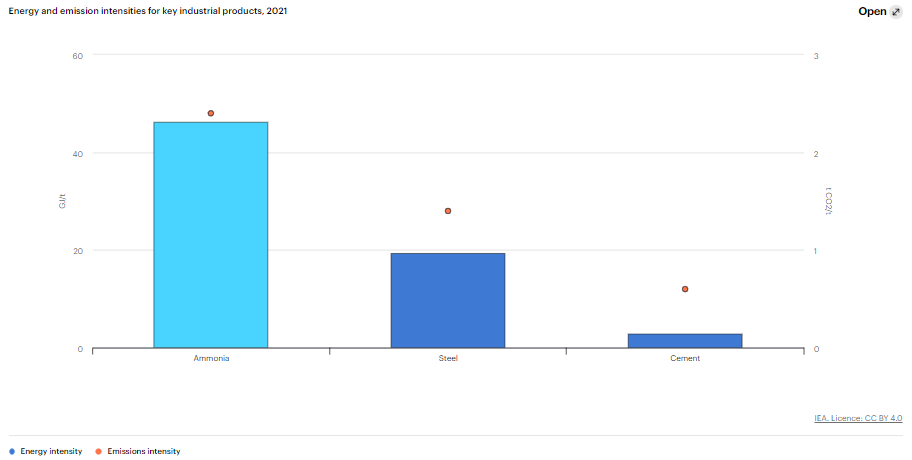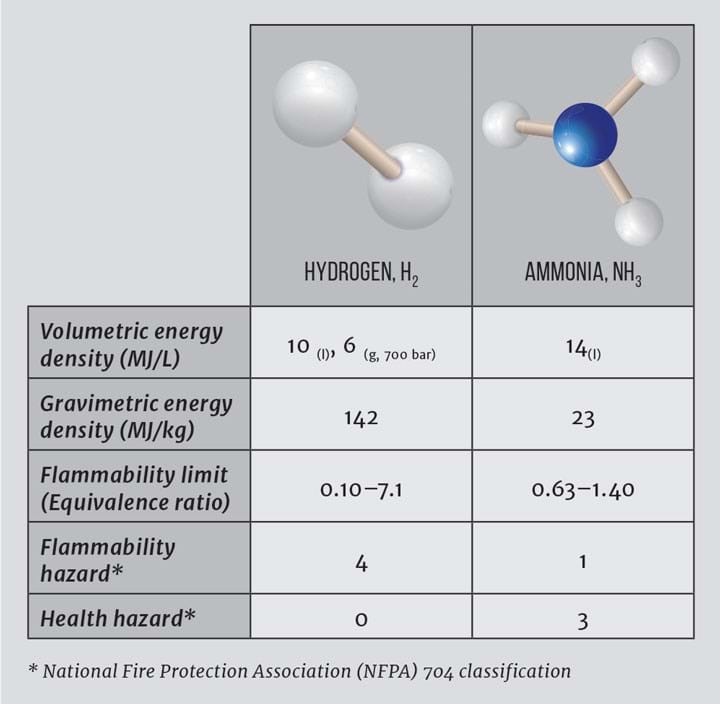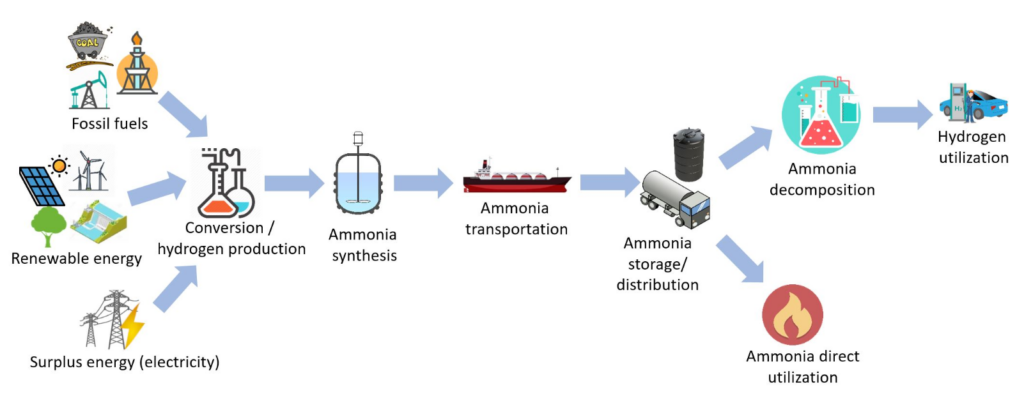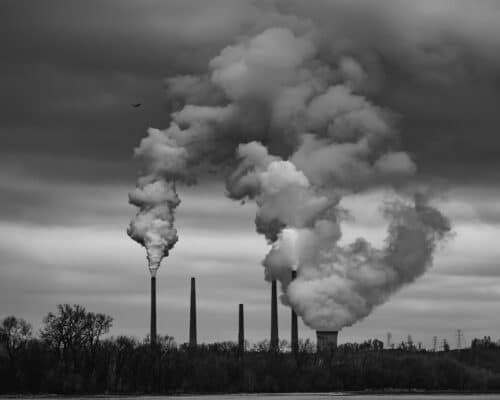Ammonia Fuel: Powering Global Decarbonisation Efforts
Jon Rehg / Shutterstock.com
06 July 2023 – by Eric Koons
Ammonia fuel is emerging as an exciting prospect in the search for low-carbon energy options. While ammonia is commonly known for its use in fertilisers and cleaning products, its potential as a fuel source, hydrogen carrier and low-carbon energy carrier has captured the attention of several industries.
What Is Ammonia Fuel?
Ammonia fuel is composed of nitrogen and hydrogen. It is synthesised through the Haber-Bosch process, which combines nitrogen and hydrogen under high temperature and pressure and is facilitated by an iron-based catalyst. Hydrogen feedstock primarily comes from natural gas, and nitrogen comes from air.
Currently, the process is powered almost exclusively by fossil fuels – 70% of it through natural gas and the remainder through coal. This accounts for 20% of industrial natural gas and 5% of coal demand globally and consumes 2% of the global energy supply.
Carbon Emissions from Ammonia Production
As a result, it is very emissions-intensive. Direct carbon dioxide emissions from ammonia production equate to 450 million tonnes of CO2 annually, which is equal to the total energy emissions of South Africa. This works out to 2.4 tonnes of CO2 per tonne of ammonia produced, twice the emissions from other hard-to-abate sectors, like cement production.

Green Ammonia: A Low-Carbon Solution
Currently, ammonia produced from fossil fuels is not a viable low-carbon energy option or carbon free fuel. However, sustainable options are advancing to produce green ammonia.
Green ammonia, also known as renewable or carbon-free ammonia, uses renewable power to power the Haber-Bosch process. Additionally, emissions-free hydrogen energy produced with renewable energy-powered electrolysis is used as a feedstock. This approach significantly reduces carbon emissions and makes ammonia a low-carbon energy option.
While the green ammonia industry is still in its early stages, it is attracting the attention of industry leaders and governments worldwide.
Is Ammonia a Better Fuel Than Hydrogen?
Yes, ammonia is better fuel than hydrogen. Regarding low-carbon fuels, both ammonia and pure hydrogen have similar properties and fill the same niche. This inherently makes the two options competitive. However, ammonia does have several properties that make it more attractive for some use cases.
First, ammonia has a higher volumetric energy density than liquid hydrogen, allowing more efficient storage and transport. Second, ammonia’s storage requirements are much easier to meet than liquid hydrogen’s. Ammonia storage requires -33oC, compared to liquid hydrogen at -253oC. This means storage and transportation infrastructure is cheaper, easier to build and less energy intensive.
Finally, global ammonia infrastructure already exists for fertiliser production, including 120 ports with ammonia terminals. The existing hydrogen infrastructure is lacking and is a significant roadblock for the hydrogen economy.

Ammonia and Hydrogen Work Together
Hydrogen outcompetes ammonia in a few critical areas, most notably its mass-energy density. Hydrogen’s mass-energy density is over six times greater than ammonia. This makes hydrogen the better fuel source, as more energy is generated for each kg of hydrogen burned.
However, hydrogen and ammonia can work hand-in-hand. Hydrogen can be converted into ammonia for storage and transport and then back into hydrogen for its end use. This addresses several of the challenges associated with hydrogen yet retains its benefit of a higher total energy output.
What Are the Problems With Ammonia Fuel?
Beyond ammonia’s competition with hydrogen, it faces several additional challenges that require addressing before it is viable for larger adoption.
One significant concern is the emission of nitrogen oxides (NOx) during ammonia combustion, a potent greenhouse gas. Research and development must go into engine catalysts to remove nitrous oxides before they enter the atmosphere.

Another challenge lies in developing efficient and cost-effective catalysts for ammonia synthesis. The traditional Haber-Bosch process requires high temperatures and pressures, resulting in significant energy consumption. Exploring alternative catalysts and reaction conditions can lead to more sustainable and economically viable production methods.
Finally, ammonia is toxic to humans. In small doses, it is an irritant, yet high levels of exposure can damage the lungs or lead to death. Developing proper safety protocols, as well as training and infrastructure, is essential to ensure the safe use and transportation of ammonia fuel.
The Potentional of Ammonia as a Fuel
Ammonia fuel holds the potential to be a critical component of the world’s shifting energy systems. Its high energy density, ease of storage and compatibility with existing infrastructure make it an attractive option. Furthermore, when combined with hydrogen, ammonia can catalyse global decarbonisation efforts.
The International Energy Association believes green ammonia will be critical to reaching global net zero emissions by 2050. However, it will require an annual investment of over USD 14 billion into green ammonia production to reach this milestone. Government and stakeholders will be the core groups driving this mission.
by Eric Koons
Eric is a passionate environmental advocate that believes renewable energy is a key piece in meeting the world’s growing energy demands. He received an environmental science degree from the University of California and has worked to promote environmentally and socially sustainable practices since. Eric’s expertise extends across the environmental field, yet he maintains a strong focus on renewable energy. His work has been featured by leading environmental organizations, such as World Resources Institute and Hitachi ABB Power Grids.
Read more

